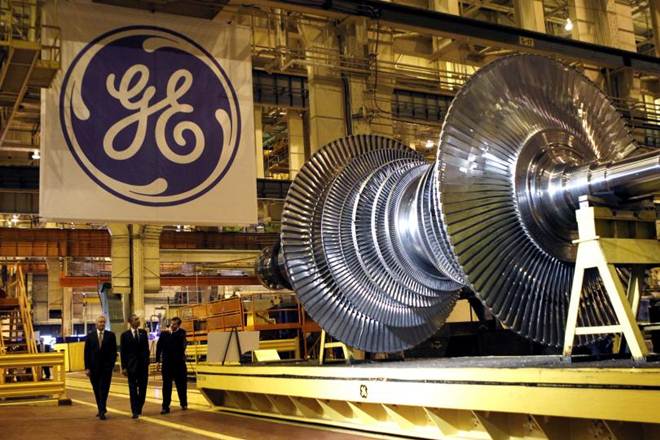General Electric Dow-ner
June 20, 2018 | Expert Insights

After over a century, General Electric is the last original member to be dropped from the Dow Jones Industrial Average on 19th June.
The spot on the blue-chip index was replaced by Walgreens Boots Alliance drugstore chain.
Background
The Dow Jones Industrial Average (DJIA) is a price-weighted average of 30 significant stocks traded on the New York Stock Exchange (NYSE) and the Nasdaq. Created by Charles Dow and business partner Edward Jones in 1896, the blue-chip index originally calculated the average by adding the prices of the 12 Dow component stocks and dividing by 12. Higher share prices of companies are subsequently given a higher weight in the index while accounting for additions and subtractions from mergers, stock splits, bankruptcy and so on.
Blue-chip stocks represent financially stable, well-established companies that provide investors with consistent returns, making them desirable investments. Since blue-chip companies are consistent with the economy, the performance of a blue-chip index could be considered a gauge of an industry's or region's economic strength. DJIA calculates the average for merely 30 companies based on price which not only excludes thousands of other assets, but also standard market factors such as momentum, size, value, and market capitalization.
General Electric Corporation is one of the largest corporations in the world. Their business activities span a wide range of areas such as aircraft engine manufacturing, appliances, healthcare equipment, and even the NBC television network. It was formed in 1892, part of the early energy sector of USA, as the result of a merger of the competing companies Edison General Electric Company and the Thomson-Houston Company. Thomas Edison did not support the merger and left the company soon after. Nevertheless, the impact that GE has had on engineering is compounded by the fact that GE employees have been granted an astounding 67,000 patents over the years.
A decade and a half ago GE was the world’s most valuable public company. However, control over key industrial markets and the diversification into financial services brought it into the eye of the 2008 financial crisis.
Analysis
In 2017 GE ranked among the Fortune 500 as the 13th-largest firm in the US by gross revenue. A day after the announcement, the company’s NYSE valuation of $12.90 was slightly above the 52-week low of $12.73, the lowest share of the index’s 30 companies. The company recently warned they will not be able to pay their 2019 dividend.
While the Dow index is more well known, professional investors bet much more money on what happens to the S&P 500, an index in which the one-time leading US company has only a tiny influence. GE’s drop from the Dow will thus likely not pose a risk of wide selling pressure by indexed investment funds. Not all companies that have lost their place in the Dow have shut shop. Bank of America Corp has outperformed the Dow by 46 points since it was removed in 2013.
“Symbolically, this indignity marks GE’s fall from grace,” said analysts at RBC. “However, given that the DJIA is a price-weighted index, GE now represents less than one-half of a percent of the overall index with its current stock price sitting below $13.”
GE will formally be replaced by the better performing Walgreens on 26th June. It is seen as a representation of US shifting away from heavy industries towards technology, software and finance. With the addition of Walgreens, the Dow will better reflect the role of consumers and healthcare in the U.S. economy, S&P Dow Jones Indices said in a statement.
Technological change has shortened the lifespan of many companies through what Richard Foster describes as “creative destruction”- the fall in asset value, and consequent company failure, owing to innovations elsewhere. Foster observed assets on S&P 500 and noticed glaring historical differences in valuation and retention in the market. In 1958, a company could average 61 years on the list, but the current average stands at 18 years.
Disruptive Innovation, an innovation that creates a new market and value network and eventually disrupts an existing market and value network, is a force gaining strength in the Fourth Industrial Revolution. From personal computers and floppy drives to smartphones and cloud computing, technological innovations present a threat to industrial markets. This can be seen in the performance of tech-driven Alphabet, Amazon, Apple, Facebook and Microsoft which are the five most valuable companies in the United States today.
According to McKinsey Quarterly, even though hierarchies and bureaucracies do not innovate, free and empowered individuals do; knowledge, innovation, spontaneity, and self-reliance are becoming increasingly valued and promoted. Companies incapable of tapping into latest technological advancements will have to face failure in a global economy running on the “next big innovation.”
Assessment
Our assessment is that General Electric has survived the markets for over a century primarily through diversification. We believe that GE’s fall from Dow may influence the company to acknowledge developing areas like technology to better protect their market interests. The choice falls upon GE management to either cause disruptive innovation themselves or fall prey to the Fourth Industrial Revolution’s market architecture.








Comments